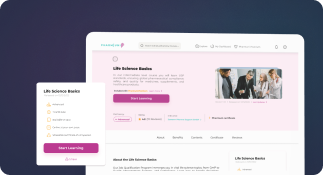Adverse Event Reporting
Definition
Adverse event reporting is a critical component of pharmacovigilance (PV), which involves the systematic collection, analysis, and communication of information about undesirable effects or any other drug-related problems. An adverse event (AE) refers to any untoward medical occurrence in a patient administered a pharmaceutical product, which may or may not be causally related to the treatment.
This process ensures that potential risks associated with medicinal products are identified, assessed, and mitigated to protect patient safety and maintain regulatory compliance.
Detailed Explanation
Purpose and Importance of Adverse Event Reporting
The primary goal of adverse event reporting is to monitor the safety profile of pharmaceutical products throughout their lifecycle—from clinical trials to post-marketing surveillance. It plays a vital role in identifying previously unrecognized adverse reactions, understanding risk factors, and updating safety information.
Regulatory authorities such as the U.S. Food and Drug Administration (FDA), the European Medicines Agency (EMA), and the World Health Organization (WHO) require pharmaceutical companies and healthcare professionals to report adverse events to ensure ongoing evaluation of drug safety.
Types of Adverse Events
- Serious Adverse Events (SAEs): Events that result in death, are life-threatening, require hospitalization, or cause significant disability.
- Non-serious Adverse Events: Mild or moderate side effects that do not meet the criteria for seriousness but are still important to track.
- Unexpected Adverse Events: Events not previously observed or documented in the product’s labeling or clinical trial data.
Pharmacovigilance (PV) Reporting Systems
Adverse event reporting is facilitated through various PV reporting systems, which are designed to capture, manage, and analyze safety data. These systems include:
- EudraVigilance: The European Union’s data processing network for managing and analyzing information on suspected adverse reactions.
- FAERS (FDA Adverse Event Reporting System): A database used by the FDA to monitor safety concerns for marketed drug and biologic products.
- VigiBase: The WHO global database of individual case safety reports (ICSRs), managed by the Uppsala Monitoring Centre.
Who Reports Adverse Events?
Adverse events can be reported by a variety of stakeholders, including:
- Healthcare professionals (physicians, pharmacists, nurses)
- Patients or consumers
- Pharmaceutical companies (as part of regulatory requirements)
- Clinical trial investigators and sponsors
Regulatory Requirements and Compliance
Pharmaceutical companies are legally obligated to report AEs in accordance with local and international regulations. Key obligations include:
- Timely submission: Serious adverse events must often be reported within 7 to 15 days, depending on jurisdiction.
- Periodic Safety Update Reports (PSURs): Regular submission of cumulative safety data to regulatory bodies.
- Risk Management Plans (RMPs): Required documentation outlining strategies to identify, characterize, and minimize risks.
Challenges in Adverse Event Reporting
Despite its importance, AE reporting faces several challenges:
- Underreporting by healthcare providers and patients
- Incomplete or inaccurate data in reports
- Global harmonization of reporting standards
- Integration of real-world data and digital health tools into PV systems
Future Trends in Adverse Event Reporting
Emerging technologies are transforming AE reporting through automation, artificial intelligence, and real-time data analytics. These innovations aim to improve signal detection, reduce reporting burdens, and enhance patient safety outcomes.



